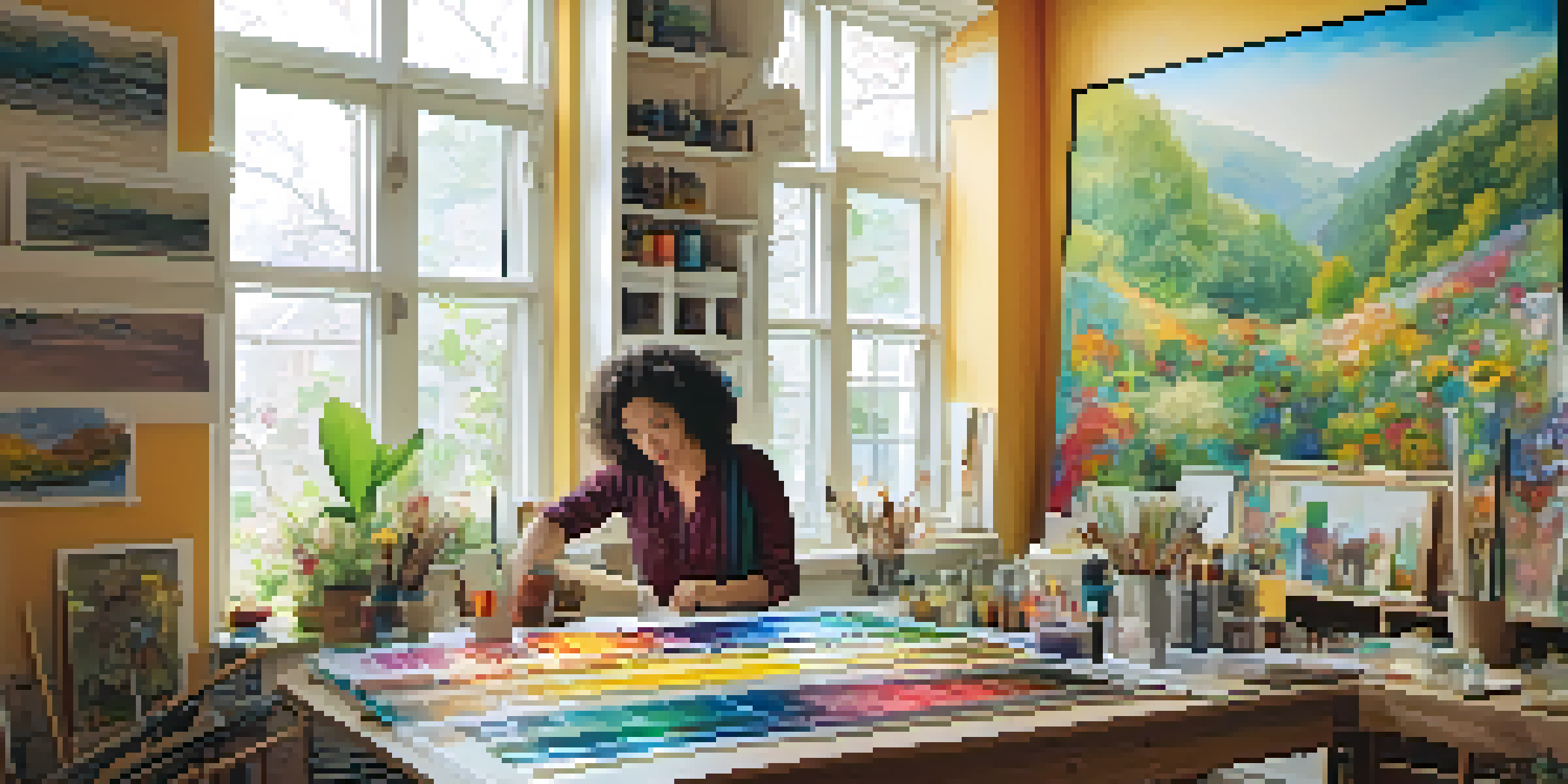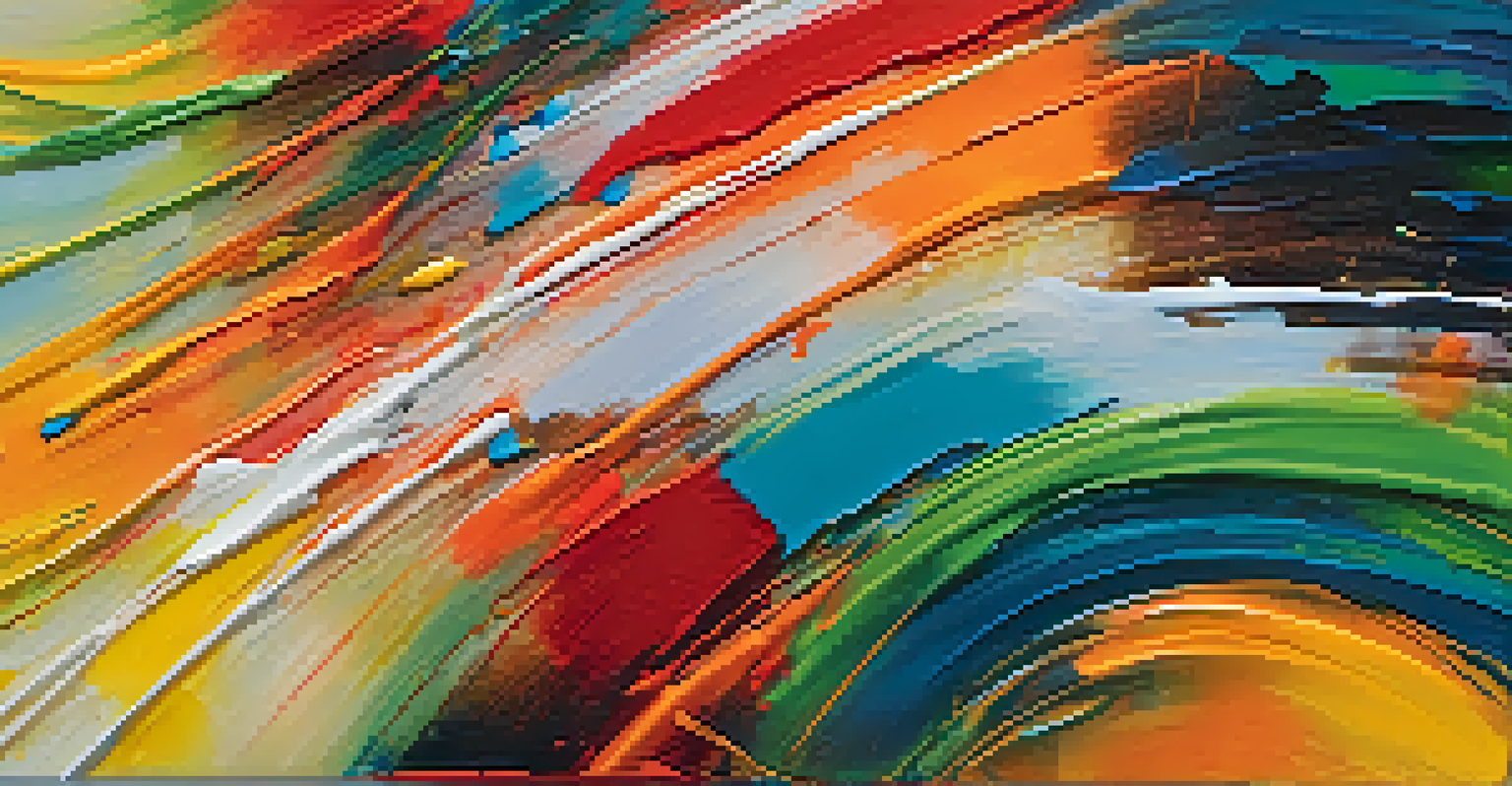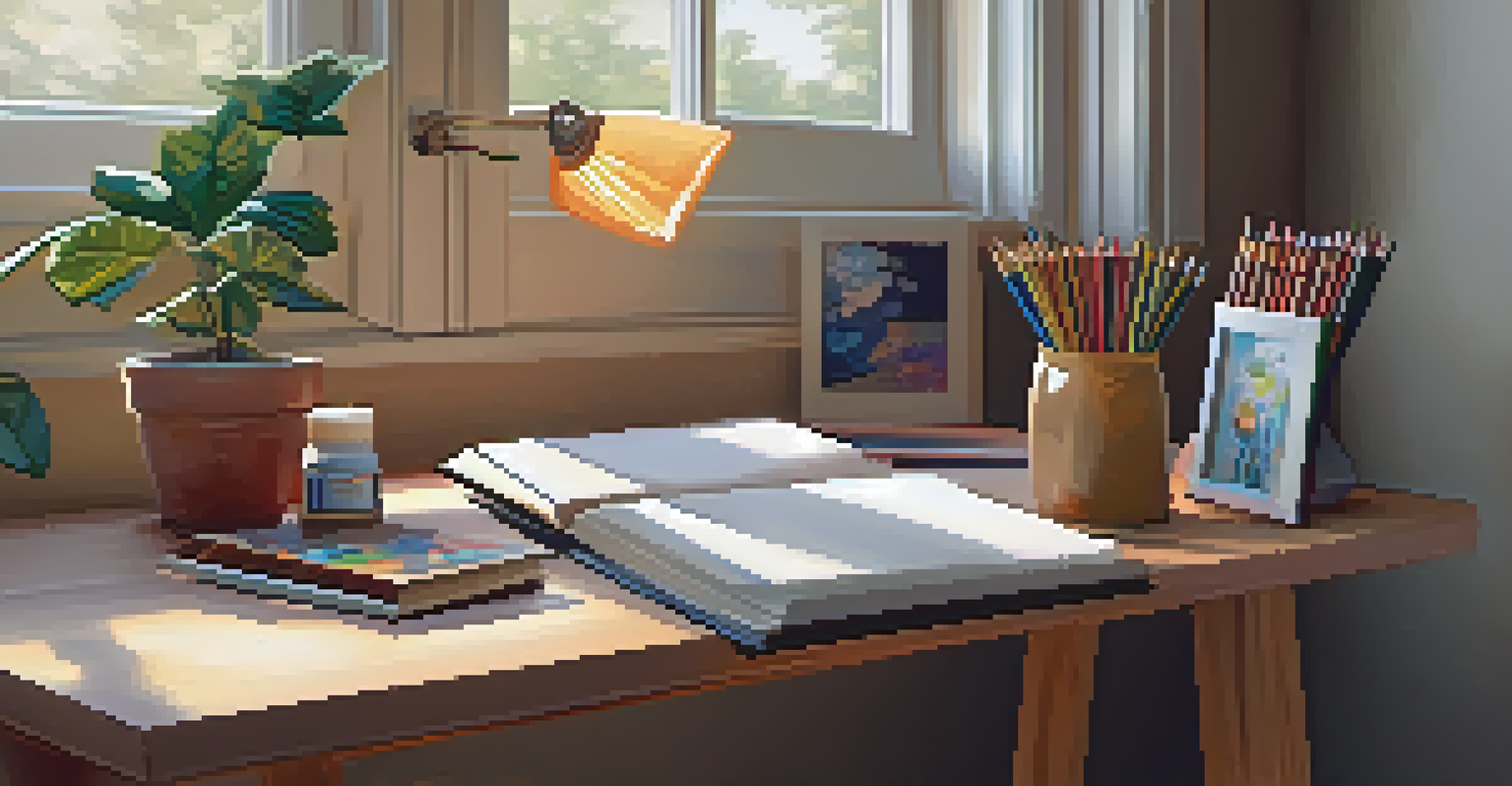Art and Emotion Regulation: Bridging Creativity and Therapy

Understanding Emotion Regulation in Daily Life
Emotion regulation refers to our ability to manage and respond to our emotional experiences. It’s not about suppressing feelings but rather finding healthy ways to express and cope with them. For instance, someone might feel overwhelmed at work and uses deep breathing techniques to calm their anxiety.
Art enables us to find ourselves and lose ourselves at the same time.
This skill is crucial for maintaining mental health, as it helps us navigate life's ups and downs. When we can effectively regulate our emotions, we are better equipped to handle stress, build relationships, and make decisions. Imagine trying to steer a ship through turbulent waters; without proper control, it can easily veer off course.
Art has emerged as a powerful tool in this context, offering creative outlets for people to process their emotions. By engaging in artistic activities, individuals can explore feelings that might be difficult to articulate, creating a bridge between their inner experiences and the outside world.
The Therapeutic Benefits of Creative Expression
Engaging in art can be a therapeutic experience, allowing individuals to express emotions that may be hard to verbalize. For example, painting or drawing can help someone visualize their feelings, providing clarity and catharsis. This process can be particularly beneficial for those who find traditional talk therapy challenging.

Creative expression encourages a sense of freedom and exploration, which can be incredibly healing. When people engage in artistic activities, they often enter a flow state, where they lose track of time and become immersed in the process. This focused state can lead to reduced anxiety and improved emotional well-being.
Art as Emotional Regulation Tool
Engaging in creative activities helps individuals express and manage their emotions effectively.
Additionally, art therapy has been recognized for its effectiveness in various clinical settings. Therapists often use artistic techniques to help clients explore their emotions safely, facilitating a greater understanding of their feelings and experiences.
Art as a Tool for Self-Discovery and Reflection
Creating art can serve as a mirror, reflecting our thoughts and emotions back to us. Through this process, individuals can gain insights into their feelings, patterns, and behaviors that they might not have recognized otherwise. For instance, someone might create a piece that captures their feelings of sadness, prompting them to reflect on the root cause of those emotions.
Every artist was first an amateur.
This reflective aspect of art can lead to deeper self-awareness, allowing individuals to identify triggers and coping mechanisms. It’s akin to keeping a journal, but instead of words, the canvas becomes a space for exploration. Each stroke or color choice can reveal layers of meaning and emotion.
Moreover, the process of creating art can foster a sense of accomplishment and confidence. Completing a piece can instill pride and reinforce a positive self-image, both of which are essential for emotional regulation.
The Role of Art Therapy in Mental Health Treatment
Art therapy is a specialized form of therapy that integrates creative expression with psychological healing. Trained therapists guide clients through artistic activities to help them explore their emotions, reduce anxiety, and improve overall mental health. This approach is particularly effective for individuals coping with trauma, depression, or anxiety disorders.
In a typical session, clients might engage in drawing, painting, or sculpting while discussing their feelings and experiences with the therapist. This combination allows for a dual focus on both the creative process and emotional exploration, making therapy more dynamic and engaging. It’s like having a conversation where words aren’t the only means of expression.
Art Therapy Enhances Mental Health
Art therapy combines creative expression with psychological support to improve emotional well-being.
Research has shown that art therapy can lead to significant improvements in emotional regulation and coping skills. Clients often report feeling more in control of their emotions and better equipped to face challenges after participating in art therapy sessions.
Art's Impact on Stress Relief and Relaxation
Creating art can be an effective way to alleviate stress and promote relaxation. Engaging in artistic activities encourages mindfulness, allowing individuals to focus on the present moment rather than worrying about the past or future. This can be incredibly grounding, especially during times of emotional turmoil.
For many, the act of creating—whether it's painting, sculpting, or even coloring in a book—can serve as a form of meditation. It draws attention away from stressors and into the rhythm of creativity, helping to lower cortisol levels and induce a state of calm. Think of it as a mini-vacation for the mind, where worries fade away.
Moreover, sharing art with others can foster connection and community, which are vital for emotional well-being. Participating in group art activities or workshops can create supportive environments where individuals can express themselves freely and connect with like-minded people.
Overcoming Barriers to Artistic Expression
Despite the benefits of art for emotional regulation, many people feel intimidated by the idea of creating art. They may believe they aren't 'good enough' or fear judgment from others. This mindset can create barriers that prevent individuals from exploring artistic expression as a means of coping.
However, it's essential to remember that art is not solely about talent; it's about the process and the emotions involved. Everyone can benefit from creative expression, regardless of their skill level. Think of it as a personal journey where the focus is on exploration and self-discovery, not perfection.
Overcoming Barriers to Creativity
Fostering a playful mindset can help individuals overcome intimidation and embrace art as a means of self-discovery.
Encouraging a mindset of playfulness can help to overcome these barriers. Trying out different mediums, experimenting with colors, or simply doodling can open the door to creative expression. Ultimately, the goal is to enjoy the process and use it as a tool for emotional exploration.
Integrating Art into Everyday Life for Emotional Health
Incorporating art into daily routines can enhance emotional regulation and overall well-being. Simple practices, like setting aside time to draw, paint, or even engage in crafts, can provide a valuable outlet for emotions. It doesn't have to be time-consuming; even 15 minutes of creative activity can make a difference.
Additionally, creating a dedicated space for art at home can encourage regular engagement. Having supplies readily available can prompt spontaneous creative sessions, turning everyday moments into opportunities for expression. Just like having a cozy reading nook can encourage reading, a creative space can foster artistic exploration.

Lastly, sharing your art journey with others can further enhance its benefits. Joining art classes or community groups can build connections and provide support, making the creative process even more rewarding. Remember, the journey of art is as important as the finished product.